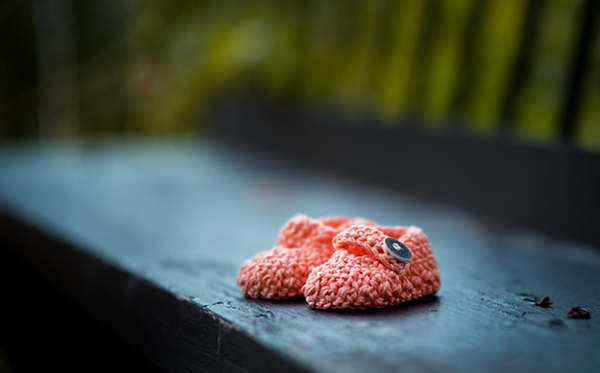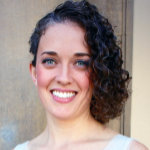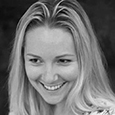Carrying the Cross of Infertility: An Open Letter
- LEIGH FITZPATRICK SNEAD
Even with four beautiful children, I still consider myself to be infertile. I still carry those scars with me. Though faded, they remain.
 Photo by ?? Janko Ferlič on Unsplash.
Photo by ?? Janko Ferlič on Unsplash.
To Those Carrying the Cross of Infertility,
I know you are suffering, and my prayer is that by sharing my own story with you I might offer a glimmer of hope amid such grief.
Almost 25 years ago, I was a young Catholic newlywed. Only years later did I wonder why we didn't suspect something could be wrong, given the half-hearted way we, like many Catholic newlyweds I suspect, practiced NFP. After a year of actively trying to conceive, unsuccessfully, I tried acupuncture. There were some beneficial effects, but none of them pregnancy. I began to dread the needles. I sometimes cried on the Washington Metro on my way to these appointments. So, when we took a two-week road trip around the United Kingdom to cheer ourselves up, to enjoy the freedom of childlessness while we could, and to distract ourselves from the obvious, I decided it was time to see a doctor.
Not prepared at this point for the long wait required to get an appointment with Dr. Hilgers, we decided instead to see a well-regarded and local reproductive endocrinologist. Armed with our "Catholic Fertility Playbook," we were looking forward to getting a diagnosis that came with an easy, effective and doctrinally licit treatment.
Long story short: That didn't happen.
No, what we did get was a diagnosis of "Unexplained Infertility." Fun, right? As a bonus, we received an increasingly mocking and hostile attitude from the doctor, who constantly reminded us that he had been "raised Catholic," for our following Church teaching when it came to fertility testing and which treatments we would consent to. After a few months of trying some different medications, our doctor was frustrated that he hadn't convinced me—a young, 20-something woman with good eggs—to sign up for his IVF program. He actually yelled at me. "I'm creating life back there," he shouted, pointing in the direction of his surgical rooms, "not destroying it!"
I looked at my husband, who grabbed my hand and led me safely out the door. We never went back.
We wanted a break from all this, but we never stopped thinking of our next step. Dr. Hilgers, we knew now, was worth any wait or the aggravation of being instructed in yet another fertility-tracking method. We also started to gather some information on adoption from our friends who had been through the process.Their best tip—the one I always share with anyone who seeks my advice or guidance on how to navigate infertility or adoption or, more often than not, both—is this: Don't wait.
If you think you might be called to adopt a child, get that paperwork started. It takes a long time, and it's tedious. And, even once it is complete, the wait for a child can be long and excruciating, especially since your arms have felt empty for so long already. You needn't stop trying to conceive to do this.
So we did the paperwork. My husband took the lead, treating it like a second job. We continued to try and make the most of our "freedom." The months following the completion of our home study largely remain a blur in my memory, though there are several dates I'll never forget. On Dec. 28, 2004, we met with and gave our deposit to the adoption agency. That January was a blur of parties and presidential inaugural balls. The month ended with a call from our agency urging us to complete our profile quickly. We finished it up, tag-team style, while we finished packing for a trip to Paris and a grumpy sedan driver waited for us outside in a snowstorm for our trip to the airport.
I've got to be honest; I spent the whole week in Paris trying not to buy French baby clothes. Little did I know how handy they would have been! Upon our return, we learned that we were among two families being considered by a birth mother. A week later, in the grocery store, we learned that we were chosen. A week after that, our son was born; and, after some frantic shopping and car-seat installation, we drove 140 miles to meet him.
When he was around 18 months and we were ready to add to our family, we decided it was finally time to see Dr. Hilgers. I learned the Creighton Model by phone. (I actually really liked my instructor and was thrilled to meet her in person when I finally made it to Nebraska.) By then, I was 33. After many months of blood draws and an exploratory laproscopy, we were given very good chances of conceiving under Dr. Hilgers' care. However, after more than a year of treatment—read: needles—I was still not pregnant.
We were heading off to London for a semester, and, finding ourselves exhausted again, we decided to take a break and try again when we returned home. We had the best time! Our son was young, and my husband's workload was light. We enjoyed so much good family time and, with the help of babysitters, some great date nights.
As our departure date grew near, I mentioned that I should probably get in touch with Dr. Hilgers' office to get things going. My husband paused and then suggested that maybe we don't. We were so light and happy without the needles and monthly bad news. We loved our son beyond measure. "Let's adopt again," he said.
So when we arrived home that summer in 2010, we got to work again with my husband at the reigns. At the end of February 2010, our agency called to tell us that they had received all the needed paperwork and we were about to "go live." Then, almost as an afterthought, they asked if we might be interested in matching with a birth mother expecting twins—in three weeks! Three weeks. "Yes, of course," we said, thinking it was a remote possibility but glad that our family was being considered and hopeful that we might be welcoming a baby within the next year.
The next day, we learned that the birth mother wanted to speak with us that evening. She said over the phone that she had chosen us to be her twins' parents. She also said that the babies would be delivered in three days, not three weeks. Another frantic baby-shopping spree, this time for two. We hit the road shortly thereafter, and I was there for their birth.
You may know that identical twin boys will keep you very busy indeed.
And our professional lives got busier. We traveled a lot; we bought a new house. And by the time we finally set about adopting again, COVID hit.
Eventually, we were active again. We knew that being in our 40s with three older children might make us less attractive than we had been in our 20s and 30s and that another baby might not be coming for us, and that was okay. We had been blessed beyond all measure.
But it happened. Almost exactly 11 years after the twins were born, our fourth son arrived. What a blessing he is. As my husband put it, "He just makes everything better."
It can be easy to think that the cure for infertility is a baby. After all, the main symptom of infertility is the absence of a baby. However, the baby is not the full story. Even with four beautiful children myself, I still consider myself to be infertile. I still carry those scars with me. Though faded, they remain.
I spent many months over the last 18 years devastated when another month would roll by and I would still not be pregnant. I felt this disappointment even when not under a doctor's care.
A lot of people with normal fertility cannot stop talking about their pregnancy or retelling their birth stories, even decades later. Yes, even when you have children, it still stings when someone gets pregnant easily or says something insensitive about your infertility (I could write a book on this!). Yes, it is always okay to politely decline baby-shower invitations. And, yes, hearing your child wistfully tell you that they wish they had grown in your tummy will make you weep from heartbreak and joy simultaneously. It illuminates the most beautiful things that come from deep brokenness.
During this National Infertility Awareness Week, most of the focus seems to be on the baby. We, as Catholics, know there is so much more to our natural fertility cycle than babies. Its reach is wide and affects our marriages and romantic lives, our prayer lives, and is an essential guide for our health care.
I have felt the weight of the cross of infertility. Yet, here at the end of my would-have-been reproductive years, I have also come to see it as the gift it can be. For one, the gift of my children. Had I even conceived once, I doubt I would have stopped chasing the prize of additional biological children—and the idea of anyone but these four boys calling me "Mom" is now absurd to me.
Do you want to know, really know, how strong your marriage is? Put it through the test of infertility treatments that end up failing. Put it through all the unknowns and uncertainties of the adoption process. Survive all that, and you'll feel pretty good about your marriage and whatever else life might throw at you next.
Lastly, I love being in a position to commiserate with and comfort young women suffering as I did as a young bride. I love helping them discern if they have a vocation to adopt by sharing my own experiences and, sometimes, just handing them one of my babies. And I also love supporting those who, for whatever reason, don't feel called to adopt.
I hope this story of one Catholic marriage and how we became parents and carried the cross of infertility helps anyone suffering and longing for a child. Life is often long and always messy. Whatever path you choose, put your trust in Jesus, and don't be shy about asking for the interventions of the Blessed Mother and the saints. I'll be praying for you, too.
Love, Your Sister in Christ,
Leigh
 This is Meaghen Gonzalez, Editor of CERC. I hope you appreciated this piece. We curate these articles especially for believers like you.
This is Meaghen Gonzalez, Editor of CERC. I hope you appreciated this piece. We curate these articles especially for believers like you.
Please show your appreciation by making a $3 donation. CERC is entirely reader supported.

Acknowledgement
 Leigh Fitzpatrick Snead. "Carrying the Cross of Infertility: An Open Letter." National Catholic Register (April 28, 2023).
Leigh Fitzpatrick Snead. "Carrying the Cross of Infertility: An Open Letter." National Catholic Register (April 28, 2023).
© 2023 EWTN News, Inc. Reprinted with permission from the National Catholic Register.
The Author
Leigh Fitzpatrick Snead is a fellow for The Catholic Association. She is a writer, editor, speaker and mother of four whose work engages questions of popular culture, motherhood, family, and the Church. She serves on the Executive Board of Human Life Action, a project of National Committee for a Human Life Amendment. Leigh lives with her husband, Carter, and four sons in Granger, Indiana.
Copyright © 2023 EWTN News, Inc.



